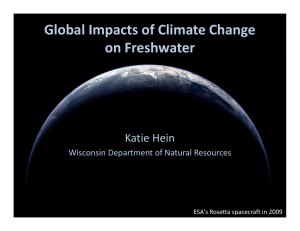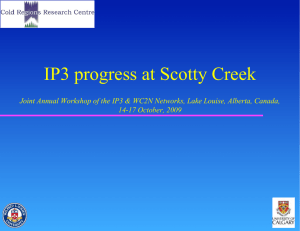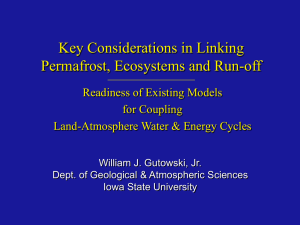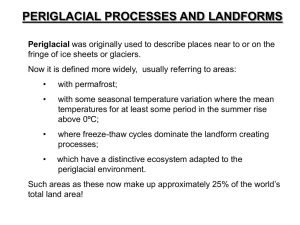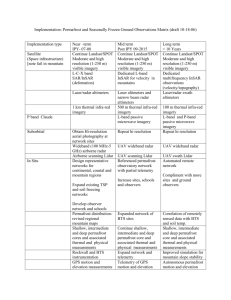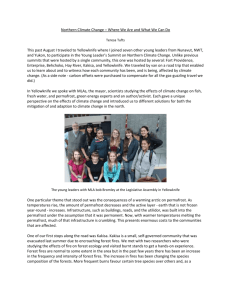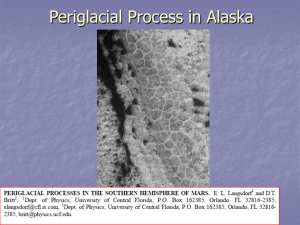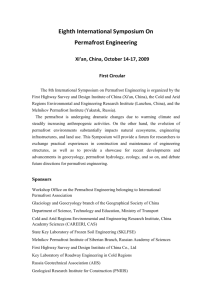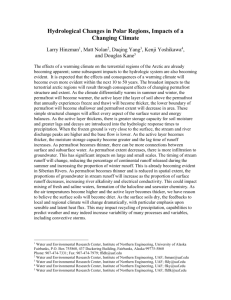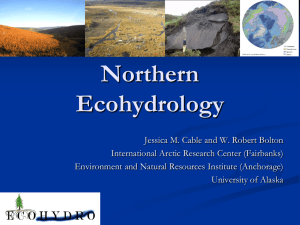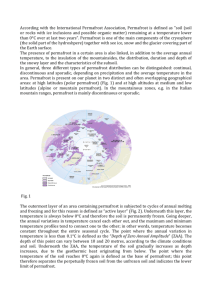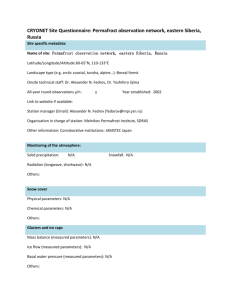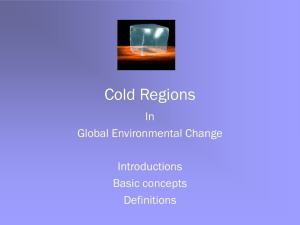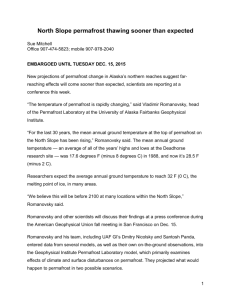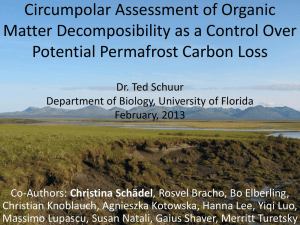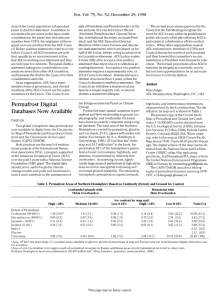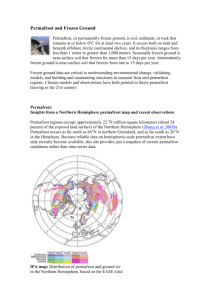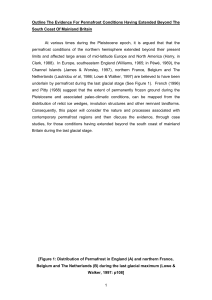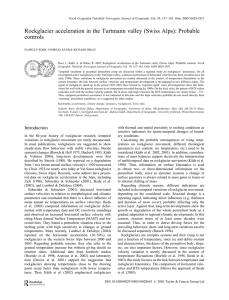Abstract
advertisement
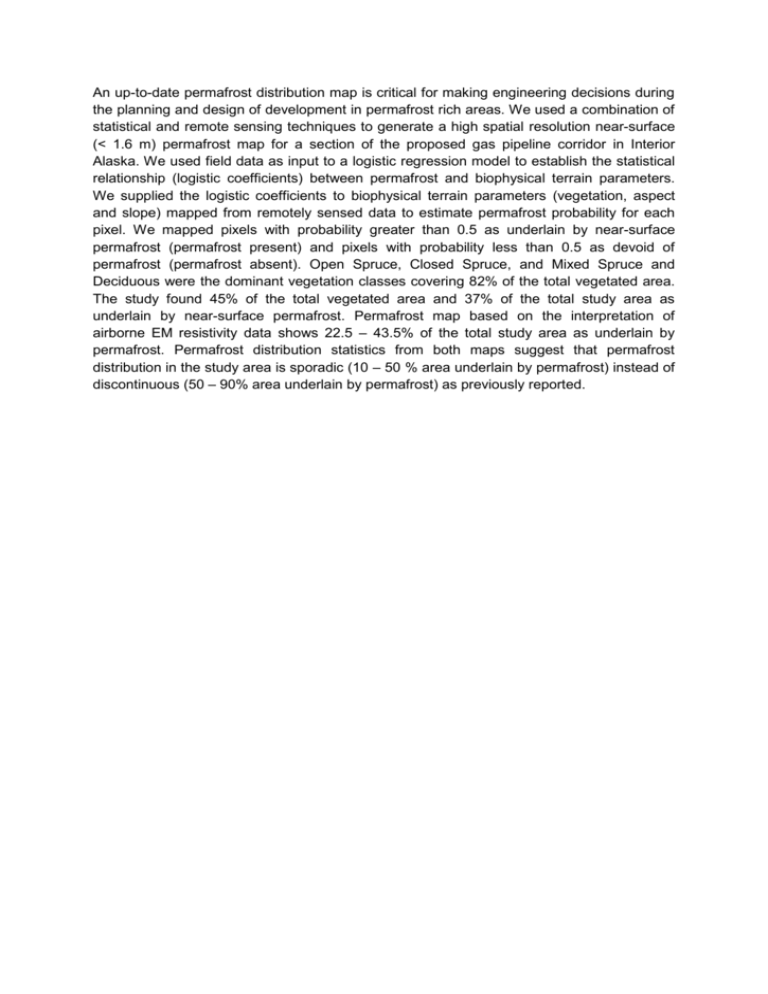
An up-to-date permafrost distribution map is critical for making engineering decisions during the planning and design of development in permafrost rich areas. We used a combination of statistical and remote sensing techniques to generate a high spatial resolution near-surface (< 1.6 m) permafrost map for a section of the proposed gas pipeline corridor in Interior Alaska. We used field data as input to a logistic regression model to establish the statistical relationship (logistic coefficients) between permafrost and biophysical terrain parameters. We supplied the logistic coefficients to biophysical terrain parameters (vegetation, aspect and slope) mapped from remotely sensed data to estimate permafrost probability for each pixel. We mapped pixels with probability greater than 0.5 as underlain by near-surface permafrost (permafrost present) and pixels with probability less than 0.5 as devoid of permafrost (permafrost absent). Open Spruce, Closed Spruce, and Mixed Spruce and Deciduous were the dominant vegetation classes covering 82% of the total vegetated area. The study found 45% of the total vegetated area and 37% of the total study area as underlain by near-surface permafrost. Permafrost map based on the interpretation of airborne EM resistivity data shows 22.5 – 43.5% of the total study area as underlain by permafrost. Permafrost distribution statistics from both maps suggest that permafrost distribution in the study area is sporadic (10 – 50 % area underlain by permafrost) instead of discontinuous (50 – 90% area underlain by permafrost) as previously reported.
